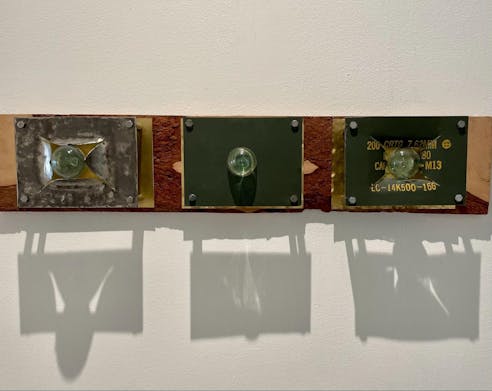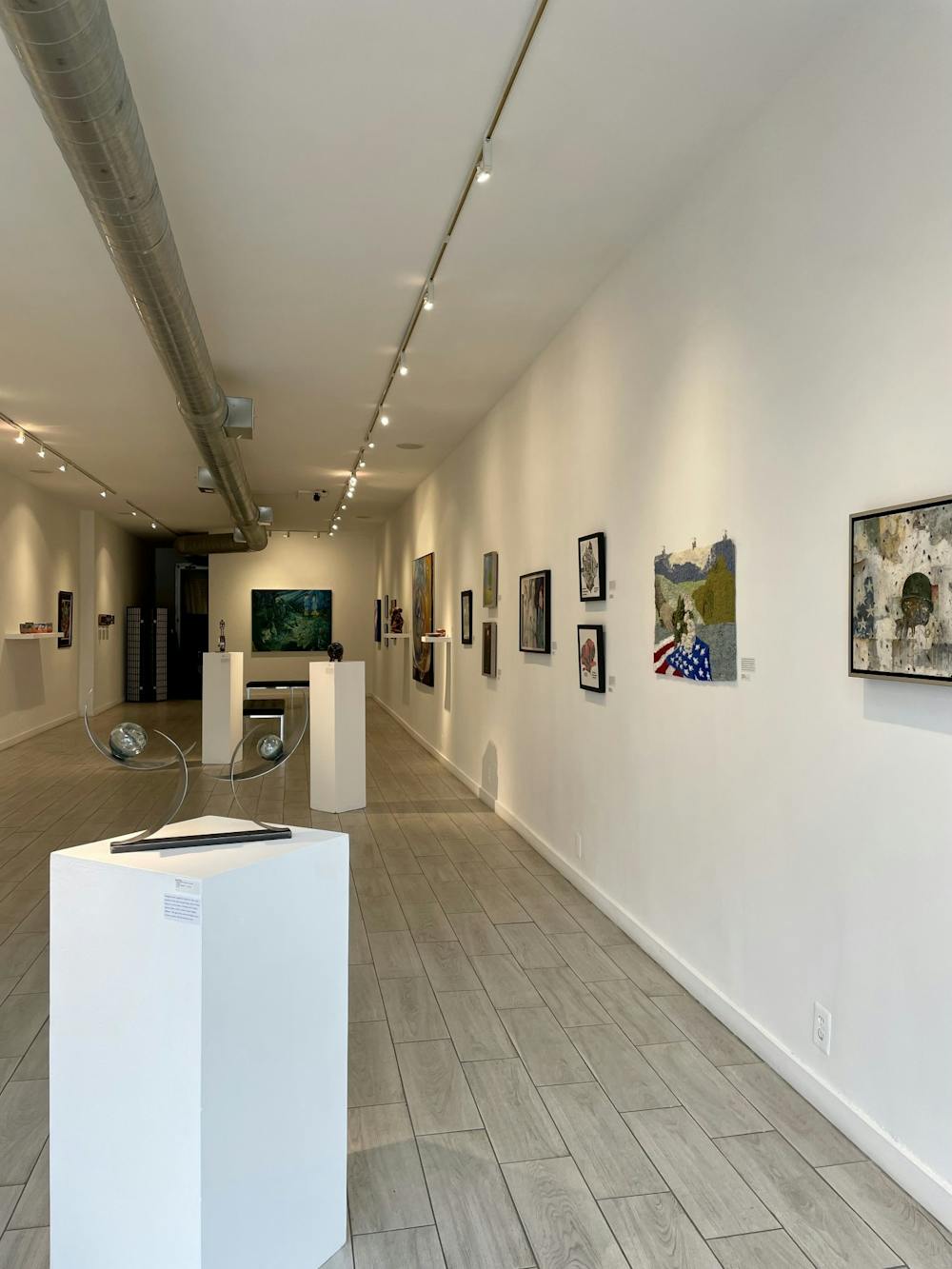In honor of Veteran’s Day and the 100th Anniversary of the Tomb of the Unknown Soldier on Nov. 11, the Honfleur Gallery in Anacostia opened “Conflict to Creativity: Transitions,” showcasing art from veterans of the D.C. community.
As many veterans experience post-traumatic stress disorder and other mental health issues, this exhibit displays the power of art as a way to process and heal from trauma. It features a variety of mediums, including ceramics, woodworking and visual poetry. The pieces not only utilize a unique set of mediums, but also express a unique perspective and understanding of what it means to be a veteran and serve in the military.
The symbolic poppy flowers and white roses were a consistent presence throughout many works. Allicia Christy, an Army veteran who served for over 40 years, painted watercolors of the two emblematic flowers.
In her piece description she explained, “The red poppy represents the blood and sacrifice of the people who gave their lives in service of the country. The white rose represents resilience and rebirth for the 100th Anniversary of the Tomb of the Unknown Soldier.”
Using the same red poppy symbol, veteran Christina Helferich-Polosky re-created the flower using garments from her deployed uniforms and fragmented phrases collaged together.
There is frequent use of nature imagery in conjunction with imagery of war and violence, leaving it up to the viewer to decide whether the art is depicting the two as contradicting subjects or if it is suggesting that war is integrated into human nature.
The pride and honor many veterans feel for their service and country that is articulated in their pieces is juxtaposed with the overall melancholic tone of the exhibit and the intense anger and sadness that many of these pieces emulate. For example, Edith Disfler, a retired Air Force veteran, forged metal from an ammo can to create a sculpture series titled “PTSD 1,” which portrays their journey from recruit to retiree.

She stated in her piece description, “On the left, there’s a shiny, enthusiastic recruit. In the center, the individual is embedded in the organization. And on the right, a pierced ammo can, like a shot, with significant denting in the cartridge brass below.”
Disler dilutes the recruit in this sculpture to a bullet acting as a weapon. And while this imagery is disturbing, Disler is able to articulate the impact of serving in the military on both the physical and emotional well-being.
The abundance of clashing concepts present in this exhibit show the power art has to hold multiple contradicting emotions and themes in the same space. The artwork created by these veterans displays how people express visually what they can’t put into words. And in doing so, this exhibit immortalizes the often overlooked experiences of veterans and allows them to share their stories.





